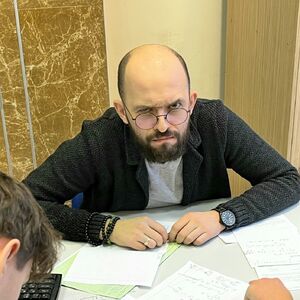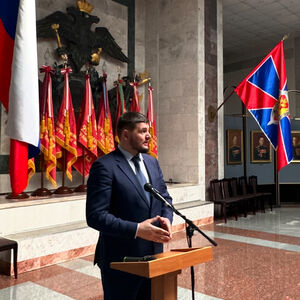Диссертация (1104273), страница 20
Текст из файла (страница 20)
J. The structural and luminescence properties of poroussilicon // Appl. Phys. Rev. 1997. Vol. 82, no. 3. Pp. 909-965.58. Godeau A., Naudon A., Bomchil G., Herino R. X-ray small-angle scattering analysis of poroussilicon layers // J. Appl. Phys. 1989. Vol. 66, no. 2. Pp. 625-629.11259. Canham L.T. Electronic states and luminescence in porous silicon quantum dots: The role ofoxygen // Appl. Phys. Lett. 1990. Vol.
57, no. 10. Pp. 1046-1048.60. Grosman A., Ortega C., Siejka J., Chamarro M. A quantitative study of impurities inphotoluminescent and nonphotoluminescent porous silicon layers // Appl. Phys. 1993. Vol. 74,no. 3. Pp. 1992-1998.61. Von Bardeleben H. J., Stievenard D., Grosman A., Ortga C., Siejka J. Defects in porous p-typesilicon: an electron paramagnetic resonance study // Phys. Rev.
B. 1993. Vol. 47, no. 16.Pp. 10899-10907.62. Theiss W. Optical properties of porous silicon // Surface Science Reports. 1997. Vol. 29, no. 3-4.Pp. 91-192.63. Tsai C., Li K.-H., Kinoski D. S., Qian R.-Z., Msu T.-C., Irby J. T., Banerjee S. H., Campbell A. F.,Kance B. K., White J. M. Correlation between silicon hydride species and the photoluminescenceintensity of porous silicon // Appl. Phys.
Lett. 1992. Vol. 60, no. 14. Pp. 1700-1709.64. Lee K.-N., Jung S.-W., Kim W.-H., Lee M.-H., Shin K.-S., Seong W.-K.. Well controlledassembly of silicon nanowires by nanowire transfer method // Nanotechnology. 2007. Vol. 18,no. 44. P. 445302.65. Koo S.-M., Fujiwara A., Han J.-P., Vogel E. M., Richter C. A., Bonevich J. E. High inversioncurrent in silicon nanowire field effect transistors // Nano Lett.
2004. Vol. 4, no. 11.Pp. 2197–2201.66. Kedzierski J., Bokor J. Fabrication of planar silicon nanowires on silicon-on-insulator using stresslimited oxidation // J Vac Sci Technol B. 1997. Vol. 15, no. 6. Pp. 2825–2828.67. Krupenkin T. N., Taylor J. A., Schneider T. M., Yang S. From rolling ball to complete wetting ondynamically tunable nanostructured surfaces // Langmuir. 2004. Vol. 20, no. 10. Pp. 3824-3827.68. Cao M., Song X., Zhai J., Wang J., Wang Y. Fabrication of highly antireflective silicon surfaceswith superhydrophobicity // J. Phys. Chem.
B. 2006. Vol. 110, no. 26. Pp. 13072-13075.69. Fürstner R., Barthlott W., Neinhuis C., Walzel P. Wetting and self-cleaning properties of artificialsuperhydrophobic surfaces // Langmuir. 2005. Vol. 21, no. 3. Pp. 956-961.70. Kovalev D., Polisski G., Diener J., Heckler H., Künzner N., Timoshenko V. Yu., Koch F. Strongin-plane birefringence of spatially nanostructured silicon // Appl. Phys.
Lett. 2001. Vol. 78,Pp. 916-918.71. Sipe J. E., Boyd R. W. // Optical Properties of Nanostructured Random Media (Topics in AppliedPhysics, Vol. 82, Ed. V.M. Shalaev) (Berlin, Springer, 2002).72. Борн М., Вольф Э. // Основы оптики (М., Наука, 1973).73. Ярив А., ЮХ П. // Оптические волны в кристаллах (М., Мир, 1987).11374. Maxwell-Garnett J. C. Colours in metal glasses and in metallic films // Phil. Trans. R. Soc.
Lond.1904. Vol. 203, no. 359-371. Pp. 385-420.75. Bruggeman D. A. G. Berechnung verschiedener physikalischer Konstanten von heterogenenSubstanzen // Ann. Phys. (Leipzig). 1935. Vol. 24. Pp. 636-679.76. Головань Л. А., Тимошенко В. Ю., Кашкаров П. К. Оптические свойства нанокомпозитов наоснове пористых систем // УФН. 2007. Т. 177, №. 6.
C. 619-638.77. Кашкаров П. К., Тимошенко В. Ю. // Оптика твёрдого тела и систем пониженнойразмерности (М., Пульс, 2008).78. Bisi O., Ossicini S., Pavesi L. Porous silicon: a quantum sponge structure for silicon basedoptoelectronics // Surface Science Reports. 2000. Vol. 38, no. 1-3. Pp. 1-126.79.
Hui P. M., Cheung P., Stroud D. Theory of third harmonic generation in random composites ofnonlinear dielectrics // J. Appl. Phys. 1998. Vol. 84, no. 7. Pp. 3451-3458.80. Hui P. M., Stroud D. Theory of second harmonic generation in composites of nonlinear dielectrics// J. Appl. Phys. 1997. Vol. 82, no. 10. Pp. 4740-4743.81. Levy O., Bergman D. J. Harmonic generation, induced nonlinearity, and optical bistability innonlinear composites // Phys. Rev.
B. 1995. Vol. 52, no. 3. Pp. 3184-3194.82. Sipe J. E., Boyd R. W. Nonlinear susceptibility of composite optical materials in Maxwell Garnetmodel // Phys. Rev. A. 1992. Vol. 46, no. 3. Pp. 1614-1629.83. Boyd R. W., Sipe J. E. Nonlinear optical susceptibilities of layered composite materials // J. Opt.Soc. Am. B. 1994.
Vol. 11, no. 2. Pp. 297-303.84. Fischer G. L., Boyd R. W., Gehr R. J., Jenekhe S. A., Osaheni J. A., Sipe J. E., Weller-Brophy L.A. Enhanced nonlinear optical response of composite materials // Phys. Rev. Lett. 1995. Vol. 74,no. 10. Pp. 1871-1874.85. Zeng X. C., Bergman D. J., Hui P. M., Stroud D. Effective-medium theory for weakly nonlinearcomposites // Phys.
Rev. B. 1988. Vol. 38, no. 15. Pp. 10970-10973.86. Hu L., Chen G. Analysis of Optical Absorption in Silicon Nanowire Arrays for PhotovoltaicApplications // Nano Lett. 2007. Vol. 7, no. 11. Pp. 3249-3252.87. Tiginyanu I. M., Kravetsky I. V., Marowsky G., Hartnagel H. L.
Efficient optical second harmonicgeneration in porous membranesof GaP // Phys. Stat. Sol. A. 1999. Vol. 175, no. 2. Pp. R5-R6.88. Заботнов С. В., Коноров С. О., Головань Л. А., Федотов А. Б., Чжан Х., Желтиков А. М.,Тимошенко В. Ю., Кашкаров П. К. Синхронная генерация третьей гармоники ванизотропно наноструктурированном кремнии // ЖЭТФ.
2004. Т. 126, № 1 (7). С. 36-46.89. Haus J. W., Inguva R., Bowden C. M. Effective-medium theory of nonlinear ellipsoidalcomposites // Phys. Rev. A. 1989. Vol. 40, no. 10. Pp. 5729-5734.11490. Nelson R. L., Boyd R. W. Enhanced electrooptic response of layered composite materials //Appl. Phys. Lett. 1999.
Vol. 74, no. 17. Pp. 2417-2419.91. Van de Hulst H. C. // Light scattering by small particles (New York, John Wiley and Sons, 1957).92. Bronstrup G., Jahr N., Leiterer C., Csaki A., Fritzsche W., Christiansen S. Optical properties ofindividual silicon nanowires for photonic devices // ACSNano. 2010. Vol.
4, no. 12. Pp. 71137122.93. Bohren C. F., Huffman D. R. // Absorption and scattering of light by small particles (Berlin,Wiley-VCH, 1998).94. Tsakalakos L., Balch J., Fronheiser J., Shih M. Y., LeBoeuf S. F., Pietrzykowski M., Codella P. J.,Korevaar B. A., Sulima O., Rand J., Davuluru A., Rapol U. Strong broadband optical absorptionin silicon nanowire films // J.
Nanophoton. 2007. Vol. 1, no. 1. P. 013552.95. Green M. A., Keevers M. J. Optical properties of intrinsic silicon at 300 K // Progress inPhotovoltaics. 1995. Vol. 3, no. 3. Pp. 189-192.96. Bandiera S., Jacob D., Muller T., Marquier F., Laroche M., Greffet J.-J. Enhanced absorption bynanostructured silicon // Appl. Phys. Lett. 2008. Vol. 93. P. 193103.97. Yablonovitch E., Cody G. D. Intensity enhancement in textured optical sheets for solar cells //IEEE Trans.
Electron. Dev. 1982. Vol. ED-29, no. 2. Pp. 300-305.98. Yang Z.-P., Ci L., Bur J. A., Lin S.-Y., Ajayan P. M. Experimental observation of an extremelydark material made by a low-density nanotube array // Nano Lett. 2008. Vol. 8, no. 2.Pp. 446-451.99. Cromie W. J. // Black silicon, a new way to trap light. Harvard Gazette. 9 December 1999,accessed on 16 February 2009.100. Torres R., Vervisch V., Halbwax M., Sarnet T., Delaporte P., Sentis M., Ferreira J., Barakel D.,Bastide S., Torregrosa F., Etienne H., Roux L.
// Femtosecond laser texturization for improvementof photovoltaic cells: Black silicon. Journal of Optoelectronics and Advanced Materials. 2010.Vol. 12, no. 3. Pp. 621-625.101. Guo Z., Jung J.-Y., Zhou K., Xiao Y., Jee S., Moiz S. A., Lee J.-H. Optical properties of siliconnanowires array fabricated by metal-assisted electroless etching // Proc.
of SPIE. 2010. Vol. 7772.P. 77721C.102. Yeo C. I., Kim J. B., Song Y. M., Lee Y. T. Antireflective silicon nanostructures withhydrophobicitybymetal-assistedchemicaletchingforsolarcellapplications//Nanoscale Research Lett. 2013. Vol. 8, P. 159.103. Nafie N., Lachiheb M. A., Bouaicha M. Effect of etching time on morphological, optical, andelectronic properties of silicon nanowires // Nanoscale Research Lett. 2012. Vol.
7. P. 393.115104. Xiong Z. Q., Zhao F. Y., Yang J., Hu X. H. Comparison of optical absorption in Si nanowire andnanoporous Si structures for photovoltaic applications // Appl. Phys. Lett. 2010. Vol. 96.P. 181903.105. Li J. S., Yu H. Y., Wong S. M., Zhang G., Lo G. Q., Kwong D. L. Si nanocone array optimizationon crystalline Si thin films for solar energy harvesting // J. Phys.
D: Appl. Phys. 2010. Vol. 43,no. 25. P. 255101.106. Kelzenberg M. D., Boettcher S. W., Petykiewicz J. A., Turner-Evans D. B., Putnam M. C.,Warren E. L., Spurgeon J. M., Briggs R. M., Lewis N. S., Atwater H. A. Enhanced absorption andcarrier collection in Si wire arrays for photovoltaic applications // Natute Materials. 2010. Vol. 9,no. 3. Pp. 239-244.107. Garnett E., Yang P.
Light trapping in silicon nanowire solar cells // Nano Lett. 2010. Vol. 10,no.3. Pp. 1082-1087.108. Boettcher S. W., Spurgeon J. M., Putnam M. C., Warren E. L., Turner-Evans D. B., KelzenbergM. D., Maiolo J. R., Atwater H. A., Lewis N. S. Energy-conversion properties of vapor-liquidsolid-grown silicon wire-array photocathodes // Science. 2010. Vol. 327, no.
















